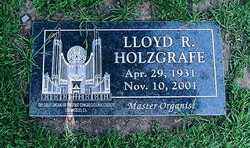In my research, I frequently will search for records of Holzgraefes who are not yet part of my family tree hoping to one day connect them in and restore them to the family. Doing this has brought large groups of Holzgraefe cousins into the family, but there are still several groups for whom no connection has been found. These groups, like the group that immigrated from Germany to New Braunfels, TX, have been researched back to the 1700s in places outside of the Herford area. That being said, they are most likely very distantly related if at all. Still, there are some, like the group in Jöllenbeck, near Herford, who have not been connected in even though they live so close to Schweicheln. Schweicheln is where the Holzgraefes can be traced back to 1500 through a lineage of Colons or Colonists. These farmers were kinda like land lords except they didn't own the land. They did have inheritance rights to it though. Therefore, the eldest son of a Colon became the new Colon while the younger siblings became a part of the Heurlinge who were like the tenant farmers or surfs, paying rent to the Colon and working for the Colon and only given a small garden with which to subsist.
So, naturally there are more records for the Colon than for the Heurlinge. The Heurlinge siblings or cousins would often move to another farm where there was a vacancy and became a Colon or the women would marry a Colon of another farm. As far as I know this was not documented too well back in the day. So, the Holzgraefe family could have spread out from Schweicheln in many directions prior to 1700 without us knowing about it.
Jöllenbeck
Evidence linking the Jöllenbeck Holtzgraefe to the pre-1700s Schweicheln clan can be found in the spelling of the surname. Prior to 1700, we tend to see the name spelt with a "t": Holtzgraefe. This "t" was dropped in Schweicheln later on, but remains in the Jöllenbeck name to this day. The spelling, of course depended on the priest or recorder in the church where the records were created. Our Holzgraefe ancestors were more than likely illiterate and could not write. Therefore, the spelling was decided by the clergy. There was a separate parish in Jöllenbeck with separate clergy. Hence the spelling difference.
Warrick, Indiana, USA
While researching my ancestors in Indiana, I would often search for "Hol*gr*e" in Indiana records. The * indicates a wildcard in the search so that it encompasses many misspellings of the name. I came up with a plethora of records, but not all of them belonged to my ancestors. Specifically, there was a Holtzgraefe family living in Warrick and later Gibson counties, Indiana. I began piecing this family together, but it didn't look like they connected to my family...at least not in America and I couldn't seem to find how they got to Indiana.
That was almost three years ago. A couple weeks ago, I was doing a similar search on Findagrave.com and found another family in Warrick by a similar name. I began researching them and it became apparent that these were the grandparents of the family I had researched almost three years earlier! I quickly did more searches, but still couldn't find how they came over from Germany. Then I found German records on FamilySearch that were, without a doubt, for this family. The records came from a town called Schieldesche and before that, Jöllenbeck. I love how things come full circle sometimes.
So, I researched the Jöllenbeck Holtzgraefe family and pieced them together on Ancestry.com (see my "Holzgraefe Histories" tree). Then I pulled up this website which I had saved years ago which lists a ton of old records from Jöllenbeck online. This website was created by genealogists in the Jöllenbeck area and is very reliable. I was able to find that this Warrick Holtzgraefe family was related not only to the Jöllenbeck group, but also the Minnisota group! There was another small Holtzgraefe family that settled in Sibley, MN which, I found, also came from this same Jöllenbeck group.
Enger
The website was able to get me all the way back to about 1700 in Jöllenbeck, but I was not able to go any further than that. The Holtzgraefes in Jöllenbeck were Heurlinges and there aren't too many records for them (like tax records). So, I did more random searches for other Jöllenbeck Holtzgraefes not yet connected. I found possible candidates for siblings or first cousins of the furthest back Holtzgraefe ancestor. One of these was recorded as Heinrich Holtzgraefe Aus Dem Kirspiel Enger or Heinrich Holtzgraefe of the Enger parish. Enger is a town which is even closer to Herford and Schweicheln. Another potential sibling married a Luebcke at some point as recorded in the birth records of their children. I found a marriage record for a Holtzgraefe by the same name marrying a Luebcke in Herford in 1725. The record came from the Enger parish.
Piecing all of this together, it looks like the family I found in Warrick, Indiana and Sibley, Minnesota came from Jöllenbeck and the Jöllenbeck clan most likely came from Enger. The question still stands...Did the Enger Holtzgraefe family branch off from the Schweicheln family some time in the 1600s? Records back then do not include family of the individual on the record so it is nearly impossible at this point to connect the two families. Still, I am trying to reach out to my German contacts who are specialists in the area who may be able to find more information on the matter. Stay tuned!










